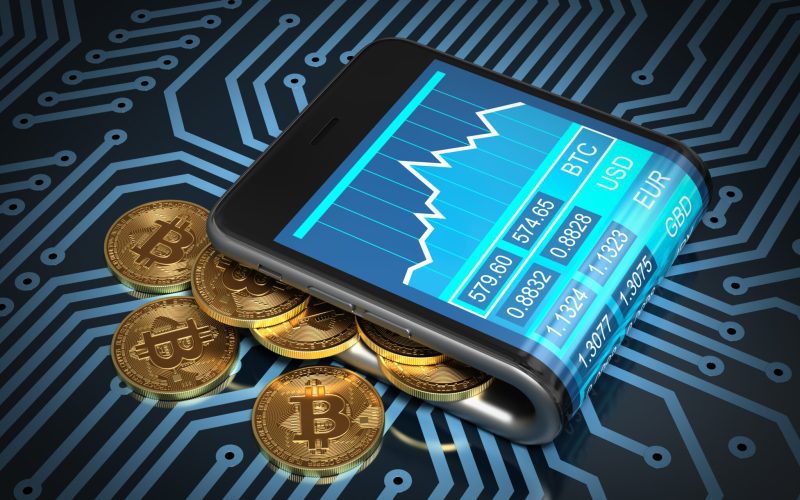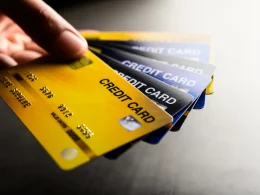In recent years, digital wallets have revolutionized the way people manage their money. With the rise of smartphones, the demand for more efficient and secure methods of making transactions has grown significantly. A digital wallet, also known as an e-wallet, is a software-based system that securely stores users’ payment information and passwords. This allows consumers to make transactions without the need to carry physical cards or cash.
This article explores the evolution of digital wallets, key features, how they function, and what you need to know as they continue to gain popularity.
What is a Digital Wallet?
A digital wallet is an electronic device, typically a smartphone or computer, that stores payment information securely. It enables users to make transactions online or at physical stores without using traditional payment methods such as credit cards or cash. Many digital wallets also offer the convenience of storing loyalty cards, digital tickets, and even personal identification.
The technology behind digital wallets has developed rapidly, with many people preferring them over physical wallets for the added security, ease of use, and efficiency they provide.
Key Milestones in the Evolution of Digital Wallets
Early Beginnings (1990s – Early 2000s)
The concept of a digital wallet can be traced back to the early days of e-commerce in the late 1990s. As the internet began to boom, online businesses needed a way to facilitate secure payments. Early pioneers like PayPal provided a solution, enabling users to make payments electronically without needing a credit card or bank account for every transaction.
In the early 2000s, several companies began developing more secure online payment systems, laying the groundwork for today’s digital wallets. However, these early systems had limited features and were not yet integrated into mobile technology.

The Mobile Wallet Revolution (2000s – 2010s)
The advent of smartphones marked a turning point for digital wallets. With the rise of mobile apps and the widespread adoption of mobile internet, companies like Apple, Google, and Samsung entered the digital wallet market. The introduction of Apple Pay, Google Wallet (now Google Pay), and Samsung Pay in the 2010s allowed users to make secure, contactless payments with their mobile devices.
Near Field Communication (NFC) technology played a significant role in this transformation, allowing smartphones to communicate wirelessly with payment terminals. This eliminated the need for physical cards or cash, making payments faster and more convenient.
The Expansion of Digital Wallets (2010s – Present)
Digital have expanded beyond just payments. They now offer services like managing rewards points, boarding passes, movie tickets, and even digital versions of government-issued identification. Services like Venmo, Cash App, and Zelle have made it easy to transfer money between individuals, further contributing to the growing adoption of digita.
Furthermore, the rise of cryptocurrencies has introduced another dimension to, with people now able to store and trade digital currencies such as Bitcoin and Ethereum within certain e-wallets.
How Digital Wallets Work
At its core, a digital wallet works by storing a user’s payment credentials, such as credit card details or bank account information, in a secure, encrypted format. When a transaction is initiated, the digital wallet communicates with a payment processor or bank to complete the purchase. This can occur through several methods:
- NFC (Near Field Communication): Users can tap their phone against a payment terminal to complete transactions.
- QR Codes: Some wallets allow payments via scanning QR codes at the point of sale.
- Online Payments: Many digital wallets integrate with online retailers, allowing users to check out with just a few clicks.
The wallet encrypts the user’s financial data, ensuring secure transactions. Modern often use biometric verification, such as fingerprint scanning or facial recognition, to add another layer of security.
Types of Digital Wallets
There are several types of digital wallets, each serving different needs:
- Closed Wallets: Used by specific companies or platforms, such as Amazon Pay or Starbucks Wallet. They are only usable for transactions within that company’s ecosystem.
- Semi-Closed Wallets: These wallets allow users to make payments with specific merchants or partners. Paytm is an example of this, allowing users to pay within certain boundaries but not universally.
- Open Wallets: Provided by financial institutions or mobile network operators, open wallets can be used to make payments, transfer funds, and withdraw money from banks. Examples include Google Pay and Apple Pay.
- Cryptocurrency Wallets: These wallets store private and public keys for cryptocurrencies and allow users to send and receive digital currencies.
Benefits of Using Digital Wallets
The growing popularity of digital wallets can be attributed to several key benefits:
- Convenience: eliminate the need to carry physical cash or cards. Users can make transactions quickly and efficiently with just their smartphones.
- Security: Digital wallets offer advanced security features such as encryption, tokenization, and biometric authentication, making transactions safer.
- Speed: Digital wallets streamline the payment process, allowing users to pay in a matter of seconds without needing to input payment details every time.
- Organization: Digital wallets can store more than just payment information. Users can keep track of loyalty programs, gift cards, and tickets all in one place.
- Global Use: Many digital wallets can be used internationally, making them a great option for frequent travelers.
Challenges and Concerns
Despite their benefits, digital wallets face some challenges:
- Privacy Issues: As digital wallets collect vast amounts of personal and financial data, privacy concerns arise regarding how companies handle and protect this information.
- Security Risks: Although digital wallets are secure, they are not immune to cyber-attacks. Hackers target to steal sensitive information.
- Limited Acceptance: While are growing in popularity, some businesses, especially in rural or remote areas, may not accept them.
- Dependency on Technology: rely heavily on the availability of internet access and mobile devices, which may not always be feasible in certain situations or regions.
The Future of Digital Wallets
As technology advances, the future of digital wallets is promising. The integration of blockchain and decentralized finance (DeFi) could further revolutionize the space by allowing for more secure, transparent transactions. Additionally, governments may adopt to distribute official documents like IDs, driving licenses, and medical records.
The continuous improvement in biometric verification, including voice and gesture recognition, could further enhance security and convenience, paving the way for even more seamless transactions.
Analysis of Digital Wallet Trends
| Feature | Traditional Wallets | Digital Wallets |
|---|---|---|
| Payment Method | Physical cards, cash | Mobile apps, contactless |
| Security | Basic | Encryption, biometrics |
| Convenience | Limited by physical presence | Available anytime, anywhere |
| Usage Scope | Limited to physical locations | Online and in-store |
| Global Reach | Dependent on currency | Multi-currency support |
| Storage | Cards, cash | Cards, tickets, IDs, crypto |
This table highlights the shift from traditional wallets to digital wallets. Digital wallets offer more advanced features and flexibility, such as increased security and global reach.
Comparative Analysis of Popular Digital Wallets
| Digital Wallet | Key Features | Supported Devices | Security Features |
|---|---|---|---|
| Apple Pay | NFC payments, in-app purchases, loyalty cards integration | iOS devices | Biometric (Face/Touch ID), tokenization |
| Google Pay | Contactless payments, peer-to-peer transfers | Android, iOS | Tokenization, biometric security |
| Samsung Pay | NFC and MST payments, rewards program | Samsung devices | Tokenization, fingerprint security |
| PayPal | Online payments, peer-to-peer transfers | All devices (app and web) | Two-factor authentication, encryption |
| Cash App | Peer-to-peer payments, Bitcoin trading | iOS, Android | PIN code, encryption |
This comparison demonstrates the unique offerings of various digital wallets, with a focus on security, device compatibility, and key functionalities.
Conclusion
Digital wallets have come a long way from their early days in the 1990s. They have evolved into powerful tools that not only simplify payments but also enhance security, convenience, and accessibility. Whether for online shopping, transferring money, or even managing cryptocurrencies, digital wallets offer a modern solution for everyday financial needs. As they continue to develop, we can expect further innovations that will make managing money even easier.












